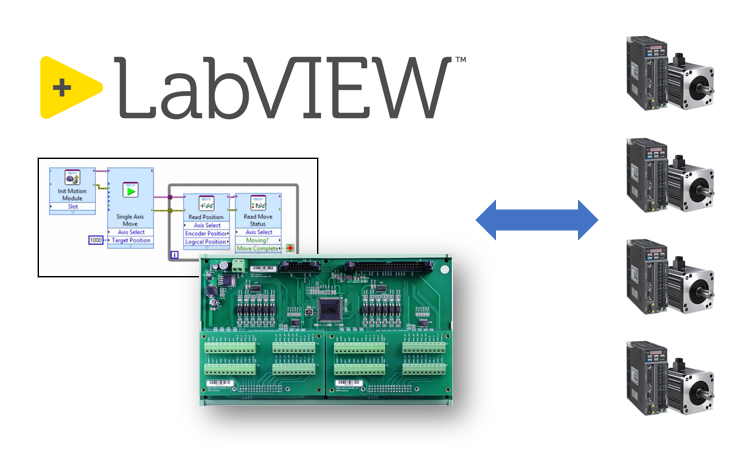LabVIEW is a powerful and flexible tool that offers many benefits for motion control applications. Here are some of the key advantages of using LabVIEW for motion control:
1. Ease of use
One of the main benefits of LabVIEW is its graphical programming language, which makes it easy to create complex motion control applications without having to write a lot of code. This means that even users with limited programming experience can quickly develop sophisticated control systems. Moreover, LabVIEW's intuitive user interface makes it easy to create, edit, and debug applications.
2. Integration
LabVIEW seamlessly integrates with a wide range of hardware devices and software platforms, making it easy to connect to and control motors, drives, sensors, and other motion control components. Additionally, LabVIEW supports multiple communication protocols, including Ethernet, USB, GPIB, and RS-232, allowing for easy integration with a variety of devices.
3. Real-Time Performance
Another significant advantage of LabVIEW is its built-in real-time processing capabilities, which make it ideal for time-critical applications where precise control is essential. This means that complex motion control systems can be developed with high levels of accuracy and responsiveness. In addition, LabVIEW offers a range of tools for monitoring and optimizing real-time performance, ensuring that applications run smoothly and reliably.
4. Customization
LabVIEW offers a wide range of tools and libraries that allow users to customize their motion control applications to meet specific requirements. For example, LabVIEW provides a comprehensive set of analysis and signal processing functions, allowing users to develop custom algorithms for processing sensor data. Additionally, LabVIEW supports the creation of custom user interfaces, making it possible to develop applications that are tailored to the needs of specific users.
5. Scalability
LabVIEW is highly scalable, meaning that it can be used to develop motion control applications for a wide range of applications, from small-scale systems to large, complex installations. Furthermore, LabVIEW's modular architecture allows users to develop applications that can be easily expanded or modified as requirements change.
Conclusion
Overall, LabVIEW is an excellent choice for anyone looking to develop motion control applications. With its powerful combination of ease of use, integration, real-time performance, customization, and scalability, LabVIEW provides users with a comprehensive set of tools for developing sophisticated and reliable motion control systems.


